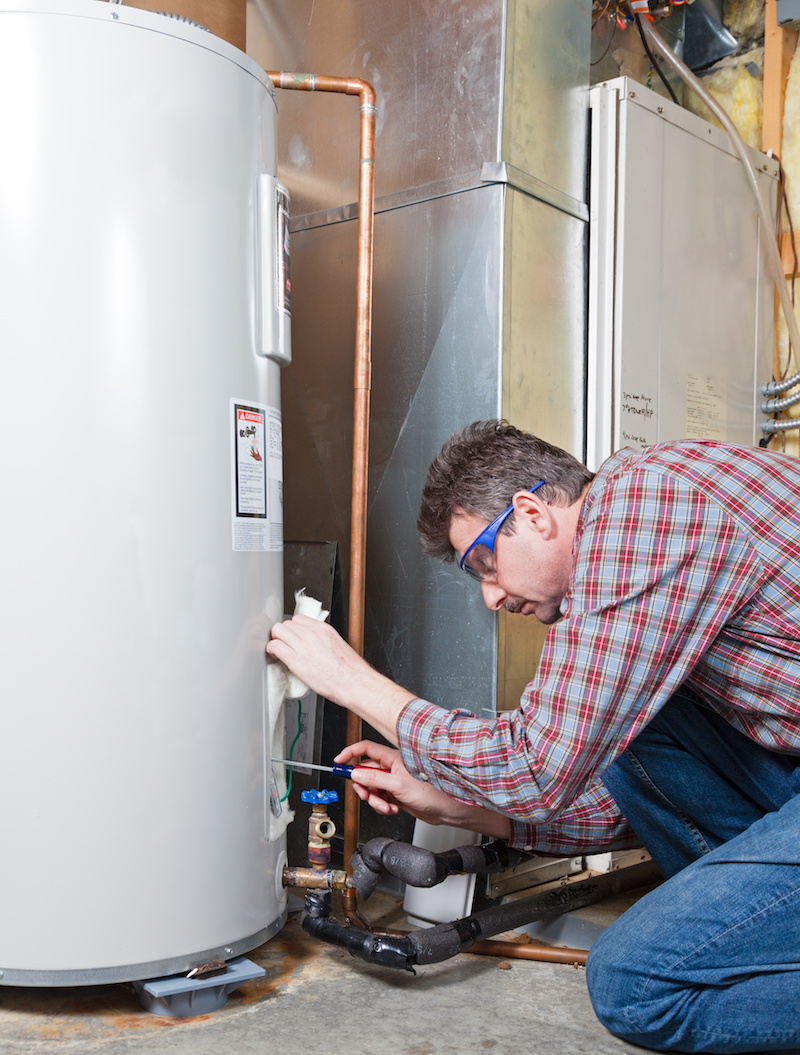HOW TO FLUSH YOUR WATER HEATER AND WHY YOU SHOULD
August 22, 2023

Your water heater needs regular maintenance just like other machines you use daily, such as your car. Over time, water heaters collect things such as sediment, calcium, and minerals that settle at the bottom of the tank. This is a matter of concern because the heating element of the water heater is at the bottom of the tank. If this heat is being blocked by sediment and other materials, then your water heater has to work harder to heat the water.
HOW DO I FLUSH MY WATER HEATER?
-
Turn off the gas if you have a gas water heater or electricity if you have an electrical one.
-
Allow the water heater to cool down. Water heaters typically keep their water at 120 degrees and you can accidentally scald yourself on the hot water.
-
Shut off water supply.
-
Turn on the hot water from a nearby faucet to prevent a vacuum from forming and allow the tank to drain more easily.
-
Attach a hose to the drain valve and run the hose to a drain or empty bucket
-
Drain the water heater tank by opening the drain valve and allow the water to flow until it stops, you may have to empty a bucket several times during this process. The water can be very hot at this stage unless you let the water heater sufficiently cool down, be careful!
-
Flush the tank by reopening the cold water supply and allow this to drain. Do this a couple of times to get rid of all of the sediment.
-
Close the drain valve.
-
Fill the water heater tank by reopening the water supply valve.
-
Power up the water heater.
Draining a water heater is doable at home, but can also be dangerous. If you are uncomfortable with flushing your water heater yourself or want to make sure it is done right, contact us online or call us at (913) 227-4943 to have your water heater flushed in no time.
HOW OFTEN SHOULD I GET MY WATER HEATER FLUSHED?
It is recommended that you flush your water heater at least once per year. Doing so will help to prevent the potential problems that sediment can bring over time. Typically, it takes one to two hours to flush a water heater. The size of your tank will impact the amount of time it takes to drain. The important part is that you allow the tank to drain so the built-up sediment can be cleared away.
WHAT HAPPENS IF I DON’T FLUSH MY WATER HEATER?
Leaving sediment build up in your water heater can not only cause it to work harder, but also lead to some serious problems like corrosion, clogged valves, or leaks. If the sediment gets to be too much, you can start to see it come out of your faucets when you turn on your water.
If left for a long time, not flushing your water heater can even lead to things like pipe bursting, loss of water pressure, or even a breakdown of the tank itself. These problems tend to occur after the course of two to five years without a flush. Fortunately, draining a water heater is a simple process or you can always call the experts for help.
DO I NEED TO FLUSH A TANKLESS WATER HEATER?
Yes. Even though tankless water heaters don’t hold as much water as traditional tanks, they can still build up sediment and require cleaning and maintenance. The steps to flushing a tankless water heater are a bit different and more technical, but it can be tricky without the proper hoses, pumps, and training.
Remember, there are really no downsides to flushing a water heater. Sediment build-up causes damage and it is more expensive to leave it and let it build than to just flush it out regularly.
Last Updated: April 02, 2024
